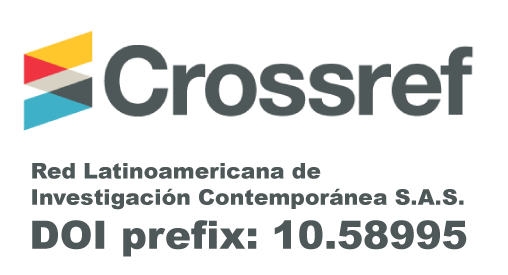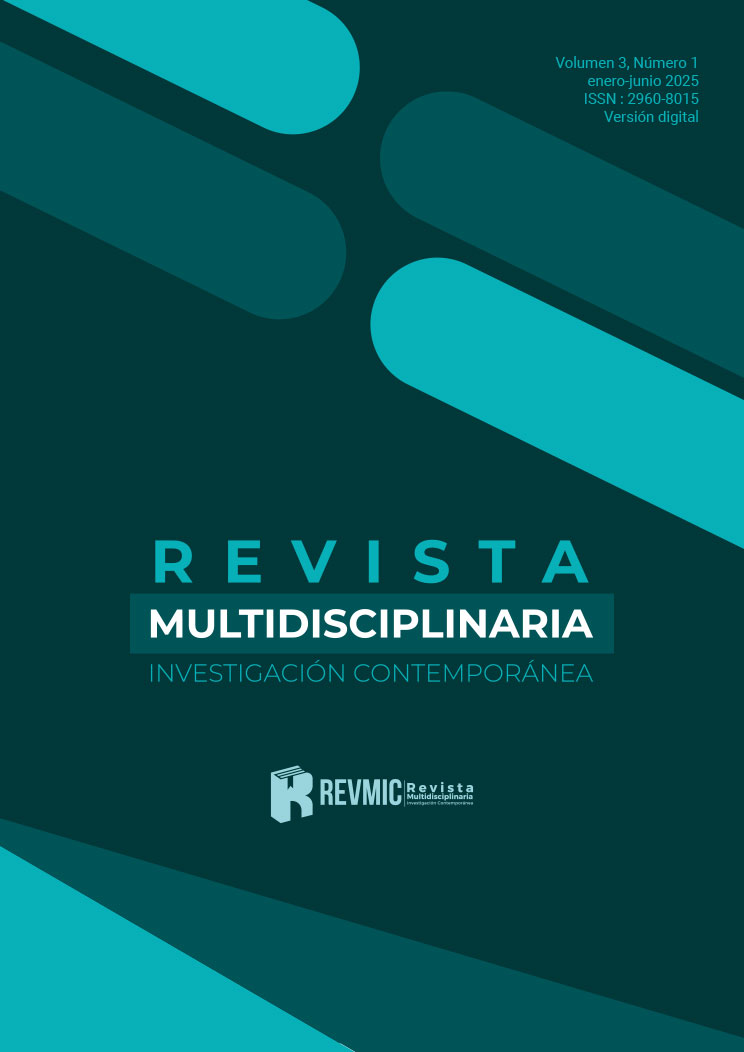Introduction: Lennox-Gastaut syndrome (LGS) is an epileptic encephalopathy characterized by recurrent seizures, cognitive impairment and electroencephalographic alterations. The education of children with this condition is a challenge, given their functional dependence and the lack of inclusive adaptations in the educational system. Aim: To analyze the educational situation of a child with SLG through a functional educational assessment, identifying their needs and possible inclusion strategies. Methodology: A qualitative and descriptive approach was used, based on direct observation, structured interviews with therapists and family members, and the application of the Individual Plan of Reasonable Adjustments (PIAR). Results: The child presents motor, cognitive and communicative limitations that hinder his school inclusion. Necessary supports were identified, such as a standing frame, multisensory therapy and alternative communication strategies.
Abstract
Introduction: Lennox-Gastaut syndrome (LGS) is an epileptic encephalopathy characterized by recurrent seizures, cognitive impairment and electroencephalographic alterations. The education of children with this condition is a challenge, given their functional dependence and the lack of inclusive adaptations in the educational system. Aim: To analyze the educational situation of a child with SLG through a functional educational assessment, identifying their needs and possible inclusion strategies. Methodology: A qualitative and descriptive approach was used, based on direct observation, structured interviews with therapists and family members, and the application of the Individual Plan of Reasonable Adjustments (PIAR). Results: The child presents motor, cognitive and communicative limitations that hinder his school inclusion. Necessary supports were identified, such as a standing frame, multisensory therapy and alternative communication strategies.
Downloads
References
- Añorve Guillén, M. (1991). La fiabilidad en la entrevista: la entrevista semiestructurada y estructurada, un recurso de la encuesta. Investigación Bibliotecológica: archivonomía, bibliotecología e información, 5(10). https://doi.org/10.22201/iibi.0187358xp.1991.10.3793 DOI: https://doi.org/10.22201/iibi.0187358xp.1991.10.3793
- Arellano Torres, A., y Peralta López, F. (2015). La planificación centrada en la persona: un ejemplo de buena práctica en el ámbito de la discapacidad intelectual. Contextos Educativos. Revista de Educación, 19, 195–212. https://doi.org/10.18172/con.2754 DOI: https://doi.org/10.18172/con.2754
- Asadi-Pooya, A. A., y Farazdaghi, M. (2022). Age at onset in patients with Lennox-Gastaut syndrome: Correlations with clinical manifestations. Journal of Clinical Neuroscience, 100, 138–142. https://doi.org/10.1016/j.jocn.2022.04.020 DOI: https://doi.org/10.1016/j.jocn.2022.04.020
- Auvin, S. (2020). Lennox-Gastaut syndrome: New treatments and treatments under investigation. Revue Neurologique, 176(6), 444–447. https://doi.org/10.1016/j.neurol.2020.01.364 DOI: https://doi.org/10.1016/j.neurol.2020.01.364
- Belousova, E. D., Burd, S. G., Ermolenko, N. A., y Mukhin, K. Y. (2022). Diagnostics and age-related evolution of Lennox–Gastaut syndrome. Management in diverse patient age periods. Epilepsy and paroxysmal conditions, 14(3), 276–293. https://doi.org/10.17749/2077-8333/epi.par.con.2022.124 DOI: https://doi.org/10.17749/2077-8333/epi.par.con.2022.124
- Camfield, P. R. (2011). Definition and natural history of Lennox‐Gastaut syndrome. Epilepsia, 52(s5), 3–9. https://doi.org/10.1111/j.1528-1167.2011.03177.x DOI: https://doi.org/10.1111/j.1528-1167.2011.03177.x
- Cordeiro, N., y Sebastián-Heredero, E. (2024). Panorama social y educativo de las personas con discapacidad en Bolivia. Cuadernos de Educación y Desarrollo, 16(4), e4068. https://doi.org/10.55905/cuadv16n4-153 DOI: https://doi.org/10.55905/cuadv16n4-153
- Delgado-Carrillo, M. J., Chávez-Prado, J. E., y Sancan-Moreira, M. T. (2019). Importancia de la evaluación clínica en la discapacidad. Dominio de las Ciencias, 5(3), 71. https://doi.org/10.23857/dc.v5i3.925 DOI: https://doi.org/10.23857/dc.v5i3.925
- Díaz-Bravo, L., Torruco-García, U., Martínez-Hernández, M., y Varela- Ruiz, M. (2013). La entrevista, recurso flexible y dinámico. Investigación en Educación Médica, 2(7), 162–167. https://doi.org/10.1016/S2007-5057(13)72706-6 DOI: https://doi.org/10.1016/S2007-5057(13)72706-6
- FINSTERBUSCH ROMERO, C. (2016). La extensión de los ajustes razonables en el derecho de las personas en situación de discapacidad de acuerdo al enfoque social de derechos humanos. Ius et Praxis, 22(2), 227–252. https://doi.org/10.4067/S0718-00122016000200008 DOI: https://doi.org/10.4067/S0718-00122016000200008
- González Morales, J. R. (2023). La observación participante como trabajador agrícola migrante purhépecha. Estudios Sociológicos de El Colegio de México, 41(122), 383–410. https://doi.org/10.24201/es.2023v41n122.2236 DOI: https://doi.org/10.24201/es.2023v41n122.2236
- Gutiérrez-Zúñiga, R., Fuentes, B., y Díez-Tejedor, E. (2018). Ictus criptogénico. Un no diagnóstico. Medicina Clínica, 151(3), 116–122. https://doi.org/10.1016/j.medcli.2018.01.024 DOI: https://doi.org/10.1016/j.medcli.2018.01.024
- Herrera, M. L., y Burneo, J. G. (2018). Síndrome de Lennox-Gastaut. Aproximación diagnóstica y avances terapéuticos: Fármacos antiepilépticos, Canabidiol y otras alternativas. Revista de Neuro-Psiquiatria, 81(2), 82. https://doi.org/10.20453/rnp.v81i2.3337 DOI: https://doi.org/10.20453/rnp.v81i2.3337
- Irazoque-Palazuelos, F., y Barragán-Navarro, Y. (2009). Epidemiología, etiología y clasificación. Reumatología Clínica, 5, 2–5. https://doi.org/10.1016/j.reuma.2009.09.007 DOI: https://doi.org/10.1016/j.reuma.2009.09.007
- Kenyon, J. (2018). Case Report: Report of Objective Clinical Responses in Patients with Brain Cancer to Pharmaceutical-Grade Synthetic Cannabidiol. Brain and Neurological Disorders, 1(1), 01–03. https://doi.org/10.31579/2642-973X/001 DOI: https://doi.org/10.31579/2642-973X/001
- López García, M. A., Lara Abril, T. E., López Lasinquiza, L. C., Vargas Caiza, G. del C., y Vargas Congo, M. B. (2022). Lennox-Gastaut syndrome. Case report and mini-review. Salud, Ciencia y Tecnología, 2, 170. https://doi.org/10.56294/saludcyt2022170 DOI: https://doi.org/10.56294/saludcyt2022170
- Martínez‐Martínez, O. A., Nikolova, S. P., Coutiño‐Vázquez, B., y Ramírez‐López, A. (2020). Barriers to Disability Inclusion: Social Needs and Discrimination in Mexico. Latin American Policy, 11(2), 254–274. https://doi.org/10.1111/lamp.12189 DOI: https://doi.org/10.1111/lamp.12189
- Mendoza Carrasco, M. V. (2018). La discapacidad en el Perú y adaptaciones de accesibilidad de espacios e infraestructura en centros educativos inclusivos. Educación, 24(1), 35–45. https://doi.org/10.33539/educacion.2018.v24n1.1313 DOI: https://doi.org/10.33539/educacion.2018.v24n1.1313
- Nizami, F. M., Trivedi, S., y Kalita, J. (2024). A systematic review of electroencephalographic findings in Lennox-Gastaut syndrome. Epilepsy Research, 205, 107406. https://doi.org/10.1016/j.eplepsyres.2024.107406 DOI: https://doi.org/10.1016/j.eplepsyres.2024.107406
- Palma, O., Soto, X., Barría, C., Lucero, X., Mella, D., Santana, Y., y Seguel, E. (2016). Estudio cualitativo del proceso de adaptación e inclusión de un grupo de estudiantes de educación superior con discapacidad de la Universidad de Magallanes. Magallania (Punta Arenas), 44(2), 131–158. https://doi.org/10.4067/S0718-22442016000200007 DOI: https://doi.org/10.4067/S0718-22442016000200007
- Ramírez, M. de los A. A. C., Trujillo, Z. P. M., Ochoa, S. R. R., Padilla, I. C., Cuesy, S. S. D., Cuesy, S. S. D., Martínez, R. M. V., y Pirrón, T. de los Á. J. (2022). Inclusión y barreras en la educación de universitarios con discapacidades. South Florida Journal of Development, 3(2), 2986–2998. https://doi.org/10.46932/sfjdv3n2-109 DOI: https://doi.org/10.46932/sfjdv3n2-109
- Strzelczyk, A., Zuberi, S. M., Striano, P., Rosenow, F., y Schubert-Bast, S. (2023). The burden of illness in Lennox–Gastaut syndrome: a systematic literature review. Orphanet Journal of Rare Diseases, 18(1), 42. https://doi.org/10.1186/s13023-023-02626-4 DOI: https://doi.org/10.1186/s13023-023-02626-4
- Tello-Blanc, E. A., y Paredes-Floril, P. R. (2022). Apoyos y ajustes razonables al currículo para la enseñanza de ciencias sociales en estudiantes con discapacidad intelectual. INNOVA Research Journal, 7(3), 1–15. https://doi.org/10.33890/innova.v7.n3.2022.2088 DOI: https://doi.org/10.33890/innova.v7.n3.2022.2088
- Troncoso-Pantoja, C., y Amaya-Placencia, A. (2017). Interview: A practical guide for qualitative data collection in health research. Revista Facultad de Medicina, 65(2), 329–332. https://doi.org/10.15446/revfacmed.v65n2.60235 DOI: https://doi.org/10.15446/revfacmed.v65n2.60235
- Vásquez, P. (2011). Valoración funcional en niños y niñas con multidiscapacidad o sordoceguera. Alteridad, 6(2), 136. https://doi.org/10.17163/alt.v6n2.2011.05 DOI: https://doi.org/10.17163/alt.v6n2.2011.05
Published 2025-04-21
Keywords
- multiple disability,
- Lemoxx Gastaut Syndrome,
- educational assessment,
- functional,
- educational status
- inclusion ...More
Issue
Section
Copyright (c) 2025 Los autores que publiquen en la revista Multidisciplinaria Investigación Contemporánea aceptan los siguientes términos: 1. Los autores mantienen sus derechos de autor (copyright) y otorgan a la revista Multidisciplinaria Investigación Contemporánea el derecho de la primera publicación de su trabajo, bajo una licencia Creative Commons Attribution 4.0. Esta licencia permite que terceros utilicen el contenido publicado, siempre que se mencione la autoría y la primera publicación en esta revista. 2. Los autores pueden establecer acuerdos adicionales para la distribución no exclusiva de la versión publicada de su artículo en otros lugares, como repositorios institucionales, siempre y cuando se indique claramente que el trabajo fue publicado por primera vez en esta revista. 3. Los autores conservan sus derechos de autor (copyright) y garantizan a la revista Multidisciplinaria Investigación Contemporánea el derecho a publicar el manuscrito a través de los canales que considere apropiados. 4. Se permite y se recomienda a los autores compartir su trabajo en línea (por ejemplo, en repositorios institucionales o páginas web personales), una vez que el manuscrito haya sido aceptado para su publicación. Esto puede conducir a intercambios productivos y a una mayor y más rápida citación del trabajo publicado.

This work is licensed under a Creative Commons Attribution 4.0 International License.




















